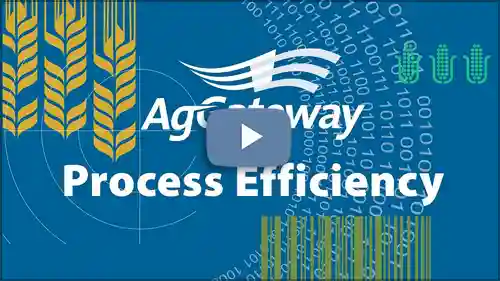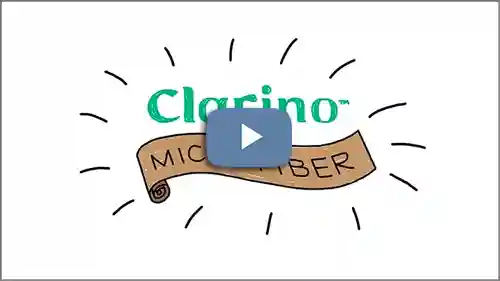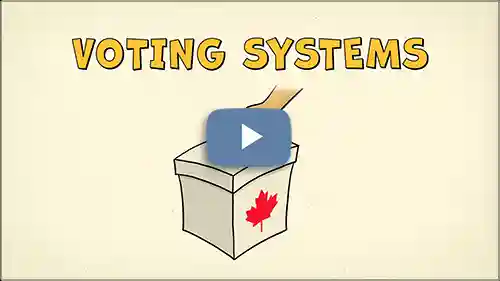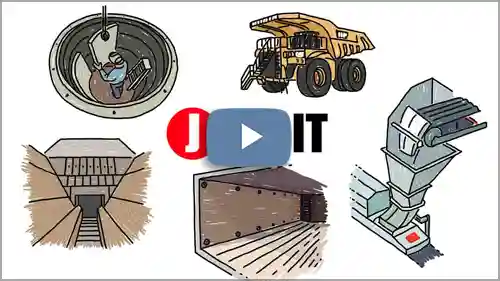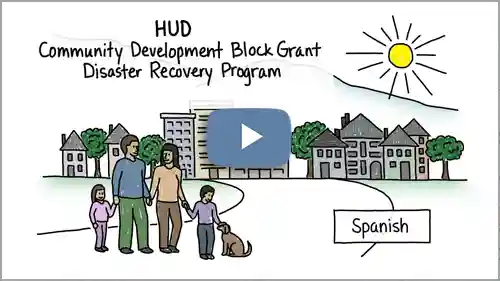Explainer Video Production: Everything You Need to Know
Explainer video production is one of the most powerful ways to communicate complex ideas in a simple, engaging, and visually compelling format. Whether you're introducing a new product, showcasing your services, or educating your audience, a well-crafted explainer video can capture attention and drive results. Businesses across industries—from tech startups to healthcare providers—use explainer videos to streamline their messaging, improve customer understanding, and boost conversions. When done right, these videos make your brand more memorable and your message more impactful.
At Clayton Commercial Arts, we specialize in crafting explainer videos that resonate with audiences and deliver measurable outcomes. Every successful explainer video starts with a clear goal, ensuring that your message is focused and effective. From scriptwriting to animation and voiceover selection, every step in the production process is designed to align with your brand and engage your target audience. Whether you need a sleek motion graphics video, a hand-drawn whiteboard animation, or a dynamic 2D animated explainer, we bring creativity and strategy together to produce high-quality videos tailored to your needs.
This page will guide you through everything you need to know about explainer video production, from understanding different styles to choosing the right animation techniques and crafting an effective script. We’ll explore the key elements that make an explainer video successful—engaging storytelling, professional design, and strategic marketing integration. By the end, you’ll have a clear roadmap for producing an explainer video that not only informs but also inspires action.
One of the biggest advantages of explainer videos is their versatility. They can be embedded on websites, social media, email campaigns, landing pages, and even used in sales presentations. A high-quality explainer video builds trust, simplifies your message, and increases audience retention—helping you turn viewers into customers. With the right approach, your explainer video can become an invaluable asset that continuously works to grow your brand and engage your audience.
If you’re looking for a professional, results-driven explainer video, you’re in the right place. At Clayton Commercial Arts, we bring decades of expertise to every project, ensuring that your video stands out and delivers real value. Explore this page to learn more about the process, pricing, styles, and best practices for explainer video production—everything you need to make an informed decision and create a video that drives results.
Complete Explainer Video Production: Deep Insights & Best Practices
Crafting an effective explainer video is both an art and a science. It involves much more than simply choosing a style—it requires thorough planning, creative execution, technical expertise, and a strategic approach to distribution. In this guide, we explore every phase of the process, and throughout our discussion, you’ll find numerous resources to dive even deeper into each subject.
1. Creative Animation Techniques & Styles
Your video’s visual style is the first impression your audience receives, and it sets the tone for the entire experience. Whether you opt for a classic animated explainer, 2D animation, or more innovative techniques like motion graphics or hybrid live action, each method brings its own flavor to your story.
Let’s start with animated explainer videos. These videos are designed to break down complex ideas into engaging, easily digestible content. If you’re curious about the most common styles, you’ll find that creativity is boundless.
In the realm of 2D animation, simplicity often meets sophistication. Many creators wonder why 2D animation is so popular—its flat, illustrative quality makes it versatile and cost‑effective. Industries ranging from education to corporate marketing have found that 2D animation benefits them most, though it does come with challenges; you can learn about common challenges and the best practices for overcoming them by exploring the tools used in 2D animation.
When it comes to motion graphics, think of them as a dynamic blend of text, icons, and visual effects that simplify data. They’re especially effective for tech and business presentations. To understand their unique value, consider reading about how they differ from traditional animation and what tools professionals use. They even offer creative ways to simplify complex data into engaging visuals.
Another popular style is whiteboard animation. Its hand-drawn, evolving illustrations create an intimate and educational feel. Many creators ask why whiteboard animation is so effective—its simplicity focuses attention on the message. However, it has its limitations, which you can learn about here. Industries that rely on clear explanations often use whiteboard animation, as seen in which industries use it most. For those looking to produce whiteboard content, discover the best tools available and tips on using color accents to add impact.
Stop motion animation offers a uniquely tactile, handcrafted look. Its frame-by-frame technique provides an authentic, nostalgic feel. If you’re interested in what makes stop motion unique, or if you’re wondering about the challenges involved, there’s plenty to explore. Learn about which industries benefit and the essential tools for stop motion. Lighting plays a crucial role too—find out how lighting impacts quality.
For data-driven narratives, infographic animation is a great choice. It turns raw data into compelling visual stories that are easy to understand. Discover who benefits from this style and the best practices for creating clear, engaging infographics. Learn about the top tools for infographic animation and how data storytelling can amplify your message.
Typographic animation brings energy and emotion to text by animating fonts and colors. It’s an excellent choice when your message relies heavily on wording. Explore why you might choose typographic animation and discover when it’s most effective for your content. Be sure to check out the challenges involved, and see which tools are recommended. Learn how color and font choices can elevate your text.
Finally, live action hybrid animation combines real footage with animated overlays to deliver a multifaceted narrative. It’s particularly effective for showcasing products or bringing a human touch to your content. Find out why you might choose this style, see which industries use it, and learn about the challenges you may face. Explore the essential tools for hybrid animation and discover how it can help showcase physical products.
2. Pre-Production: Planning, Scripting & Storyboarding
A strong foundation is critical. Pre-production is where you conduct research, set clear goals, and map out your creative vision. A thorough pre-production process minimizes surprises and ensures a smooth production.
When beginning your research, it’s important to ask why target audience research is critical. This insight helps you craft a message that resonates with your viewers. Complement this by exploring how competitor analysis can improve your video—learning from industry leaders can spark creative ideas.
Consider the role of audience pain points to ensure your content addresses real needs. Moreover, understanding how industry trends shape creative direction keeps your content fresh and relevant. It’s also crucial to define the project scope—so ask yourself, what is project scope? and then set realistic timelines as explained in why realistic timelines matter. Avoid scope creep by following tips in how to avoid scope creep.
Throughout planning, communication is key. Discover why regular communication is essential and learn how to integrate feedback by reading the benefits of client feedback and how to manage differing creative visions.
Once your plan is set, scripting takes center stage. A compelling script is the narrative backbone of your video. Some creators wonder, do companies write the script for you? Whether you choose to craft it yourself or work with professionals, use the best scriptwriting tools available. And always focus on making your script engaging through powerful storytelling.
Finally, storyboarding is where your script meets visuals. It’s essential to plan every scene, transition, and camera angle. Ask yourself, do I need to provide my own storyboard? A detailed storyboard ensures that your production runs smoothly.
3. Production: Voiceovers, Animation & Editing
Now it’s time to bring your plan to life. Production is the stage where creative vision meets technical execution. Every element, from voiceovers to animation and editing, must be executed with precision.
Starting with voiceovers, your choice of talent can make or break the narrative. It’s essential to find the right voice that matches your brand’s tone. You might ask, are there online platforms for finding voiceover talent? or where do companies source their voice talent? You also have the option to choose the voice yourself, as discussed in can I pick the voice actor for my video? Avoid pitfalls by understanding how poor voiceover choices can negatively impact your video.
In terms of animation and editing, every frame should work to tell your story. Whether you’re working in 2D, 3D, or a hybrid format, consistency and precision are key. One of the most critical aspects in post-production is color grading. Learn what color grading is and why color temperature plays such an important role in setting the mood. You can even see how to use color grading to highlight key scenes.
Equally important is quality control. Find out why quality control is critical and what steps are involved. Additionally, test audiences can help refine your final product, ensuring a seamless viewer experience.
4. Post-Production & Distribution
With production complete, post-production is where your video is polished to perfection. It’s a critical phase that transforms raw footage into a cohesive and engaging narrative, ready for distribution.
Editing is more than just cutting scenes—it’s about enhancing storytelling. For example, subtle techniques such as enhancing character expressions or applying squash and stretch principles can add emotional depth. These details ensure that the final product is both professional and engaging.
Once your video is polished, the next challenge is distribution. It’s essential to choose the right platforms to ensure your content reaches your intended audience. Consider reading about which platforms are best for hosting explainer videos and explore how social media can boost visibility. Understanding the role of email campaigns and how SEO impacts video distribution will also help maximize your reach. Furthermore, learn about the benefits of embedding videos on your website and consider how influencer marketing can further promote your video. Finally, determine if repurposing your video for various channels makes sense for your strategy.
5. Business Considerations & Beyond
Beyond the creative process, solid business planning is essential for ensuring that your explainer video delivers a strong return on investment. This includes budgeting, scheduling, risk management, and choosing the right partners.
Start by understanding your costs. Learn how to determine your video’s budget and review what a typical budget range looks like. It’s also important to consider how production timelines differ between 2D and 3D and to explore how agile project management can benefit your production.
Managing risks is another key aspect. Learn why padding extra time into your schedule is useful and understand the risks of rushing production. Additionally, discover common pre-production oversights and how scope changes can impact production. Effective communication is critical—find out how to resolve miscommunication and learn what to do if the final animation does not match your vision. Also, understand how poor voiceover selection can hurt your video.
For global impact, consider your branding and reach. Ask how to handle multiple languages for a global audience and decide if a brand mascot should appear in all your videos. You might even explore whether a comedic approach helps you stand out. Repurposing your content is also key; for example, using your script as a blog post or ad copy can maximize your investment. Then, measure success by asking if your video increases website conversions and learn how to measure ROI. Finally, confirm the technical details: learn in what format final files are delivered, understand how to embed your video on your website, and explore whether your video can be produced in multiple languages. Don’t forget to verify if you retain full rights after production and to update your content when needed (what to do if your product changes).
Provider selection is another major factor. Compare quotes by exploring how to compare quotes and learn why choosing a professional studio is often a better investment. Prepare yourself with the right contract questions, and verify quality by checking if there is a guarantee on the results. Finally, assess if your video will resonate with your audience by reading how to know if it will resonate, and review performance by looking at before-and-after stats or top-rated producer lists. For tech-driven projects, find out which companies specialize in tech or SaaS videos and see if a subscription model suits your needs (subscription-based services).
6. Viewer Engagement & Optimization
Once your video is live, understanding viewer behavior is key. By tracking engagement, you can optimize your content to keep audiences watching longer and even improve your search rankings.
Discover how to track viewer engagement using modern analytics tools. This data will show you if your video is effective or if viewers are dropping off.
Many creators ask, do explainer videos help reduce website bounce rates? The answer is often yes, if the video is engaging enough.
Additionally, determining the optimal video length for retaining viewers is crucial. And don’t overlook the role of SEO: does your video help with SEO? Hosting matters too—find out whether YouTube, Vimeo, or your own website is best.
Accessibility is essential: do you need closed captions or subtitles? And if your video is heavy on text, is kinetic typography effective for enhancing comprehension. Finally, consider if a hybrid approach works: can you mix live action with animation for added impact.
7. Extra Creative Considerations & Content Repurposing
Sometimes, going the extra mile with creative twists can set your video apart. Updating your content periodically and repurposing it across platforms not only saves money but also reinforces your message.
For instance, if your brand rebrands, ask how to update your video to reflect new guidelines. You might consider incorporating humor—do comedic elements work in a serious B2B video? They can make your content more relatable. If you want to enhance storytelling, adding a custom character or mascot might be the perfect touch.
Your video can also serve multiple purposes. For example, can it be used at trade shows? And what is the difference between a product demo and an explainer video? Learn here. Global brands may ask, is localization worth it? or even can it help onboard new users. Also, ensure your content is accessible for all audiences (are explainer videos suitable for non-technical audiences?).
Consider your video’s ROI by researching which industries see the highest returns (which industries see the highest ROI) and be mindful of legal issues—background music licensing is one such concern. Also, think about how often you need to refresh your content (how often should you refresh your video), and consider leveraging emerging tech (how AI can be used) to boost conversions (do explainer videos convert cold leads?). Finally, decide whether a lighter, comedic tone or a more serious approach (which tone works best) is right for you, and if free tools (are there free tools available) might suit your needs.
It’s also worthwhile to consider promotional strategies. For example, how do you create a mini teaser or trailer to build anticipation? And what is the best ad length? Find out here. Incorporating real testimonials (learn how) and improving email marketing CTRs (discover the impact) can further enhance your strategy.
For investor pitches, you might ask, can I use my explainer in a pitch deck? And for live events, what resolution is best? Finally, to make sure your video stands out, learn how to differentiate your content and consider repurposing your footage for future marketing (find out how).
8. Viewer Engagement & Optimization
Once your video is published, measuring its effectiveness is essential. Understanding how viewers interact with your content enables you to make improvements over time.
For example, tracking viewer engagement can reveal which parts of your video captivate the audience and which parts lose their interest. Many marketers ask, do explainer videos reduce bounce rates? Knowing the optimal video length can further enhance retention. Moreover, videos can improve your SEO, as explainer videos help with Google rankings.
The choice of hosting also plays a significant role. Consider whether YouTube, Vimeo, or your own website is the best platform for your target audience. And don’t forget accessibility—ensuring your video has closed captions or subtitles can broaden your audience.
For text-heavy content, you might ask, is kinetic typography effective? Sometimes, mixing live action with animation can provide a dynamic, multifaceted viewing experience.
9. Design, Hosting & Extra Creative Considerations
The final presentation of your video is just as important as its production. Ensuring the design is engaging and that your hosting platform meets your needs can significantly affect performance.
For instance, effective design includes accessibility features such as closed captions or subtitles and visually appealing color schemes that keep viewers engaged. When it comes to distribution, decide whether YouTube, Vimeo, or your own website is the optimal choice.
And for those seeking a creative edge, consider extra creative enhancements. Ask yourself, do comedic explainer videos help you stand out? Or, think about repurposing your content—can your script be reused as a blog post or ad copy? Additionally, for a premium touch, you might explore whether a famous actor’s voice is worth the extra investment.
Global distribution also matters. If your audience is international, learn how to handle multiple languages and decide if a consistent brand mascot will strengthen your identity. Finally, for app-based content, compare character-based animation versus kinetic typography to see which resonates best.
10. Extra Creative Repurposing & Final Tweaks
As your video nears completion, consider ways to extend its value. Repurposing content and applying final creative tweaks can maximize your investment.
For example, you might ask, how do you update your explainer video if your business rebrands? Or, consider whether adding comedic elements can inject freshness into a traditionally serious topic.
To further enhance storytelling, explore how to get a custom character or mascot that aligns with your brand personality. Also, think about multi‑purpose usage; for instance, can your video be adapted for live events? And it’s important to know the difference between a product demo and an explainer video so you can tailor your approach.
Global reach is key: is localization worthwhile? And if you’re using the video for user onboarding, find out if it helps onboard new users. Finally, ensure that your content remains engaging for all audiences—ask, are explainer videos suitable for non-technical audiences?
Further, consider how industries benefit: which industries see the highest ROI from explainer videos? And if you plan to use background music, make sure to check licensing requirements. It’s also wise to determine how often to refresh your video content.
Finally, for brands ready to embrace the latest technology, explore how AI or machine learning can be used to enhance production and conversion. Ask, do explainer videos convert cold leads into paying customers? Decide on the appropriate tone—comedic or serious—and if budget constraints are a factor, consider free tools available.
In addition, think about promotional strategies: how to create a mini teaser or trailer can generate buzz, while knowing the best ad length helps in targeted campaigns. Incorporate real testimonials (learn how) to boost credibility, and consider whether your video improves email engagement (see the results). For investor pitches, ask, can your explainer be used in a pitch deck? And for events, know the optimal resolution and format.
Finally, ensure your video stands out from competitors. Ask, how do you make your video stand out? Consider repurposing your content for additional marketing benefits (learn how). And for data clarity, check which techniques best simplify complex data.
Moreover, it’s important to decide if every element is necessary. For instance, is a voiceover absolutely necessary? And do you need to create separate versions for mobile versus desktop (find out here)? Clarify whether your content is best delivered as an animated explainer or a tutorial by reading this comparison. To reduce costs, consider if you can use stock footage or images, and decide how often to mention your product within the narrative. Also, evaluate if a central character improves your story.
Finally, for the very last tweaks: if you’re offering multilingual subtitles, ask whether you need to provide your own translation. And consider if animated explainer videos remain effective in 2025. Decide whether to use 2D or 3D animation by comparing which option suits your needs. Ensure your script is as engaging as possible (learn how), and finally, evaluate if lip syncing is worth the extra investment.
To close the loop, consider mixing live action with animation (explore the possibilities), and use analytics to monitor engagement (track viewer engagement). End your video on a high note by including a powerful call-to-action (find out what works best).
11. Design, Hosting & Extra Creative Considerations
The final presentation of your video involves both design and delivery. Ensuring that your video is accessible, aesthetically pleasing, and hosted on the right platform is crucial to its overall success.
For design, consider if your video needs closed captions or subtitles to improve accessibility. Additionally, the right color schemes can keep viewers engaged throughout. When it comes to hosting, decide whether YouTube, Vimeo, or your own website best meets your needs.
Extra creative considerations can also give your video that special edge. For example, do comedic elements help you stand out in a competitive market? And if you’re looking to maximize your content’s utility, repurposing your script as a blog post or ad copy might be a smart move.
Finally, consider if a famous actor’s voice can add star power to your video. Also, think about your global strategy: how will you handle multiple languages and should you incorporate a consistent brand element like a brand mascot? And if you’re creating app content, explore whether character-based animation or kinetic typography is the better choice.
12. Extra Creative Repurposing & Final Tweaks
As a final step, repurposing and fine-tuning your content can extend its lifespan and maximize ROI. This includes everything from adjusting the tone for different platforms to revising content based on performance data.
For example, if you need to update your content, learn how to update your explainer video when your business rebrands. You may also consider adding a touch of humor to a traditionally serious topic. If you want to inject unique personality into your video, explore how to get a custom character or mascot.
Your video might serve multiple purposes. For instance, can it be used at trade shows or conferences? Also, understand the difference between a product demo and an explainer video to tailor your approach accordingly.
Global outreach is another key consideration. Ask, is it worth localizing your video and can it help onboard new users. And for broader accessibility, ensure that your video is suitable for non-technical audiences.
Finally, think about the metrics. You’ll want to know which industries see the highest ROI, and if background music is used, be sure to address licensing concerns. Also, plan how often to refresh your video content.
For brands looking to leverage technology, learn how AI or machine learning can be integrated to further optimize production and conversion. It’s also important to consider whether explainer videos convert cold leads, and decide on the tone by asking, should you use a comedic or serious tone. If budget is an issue, explore free tools.
Promotional strategies also play a role. Find out how to create a teaser or trailer to generate buzz, and decide what the best ad length is for social media versus web use. Real customer testimonials are invaluable—learn how to incorporate them to boost credibility. Lastly, if email marketing is part of your strategy, consider how your video can improve click-through rates.
For investor presentations and live events, you’ll need to ensure technical excellence. Ask, can you use your explainer in a pitch deck? and what resolution is best for events? Finally, make sure your video stands out by learning how to differentiate your content and consider repurposing your footage to extend its lifespan.
13. Conclusion
We’ve taken a deep dive into every facet of explainer video production—from choosing the perfect creative style and meticulous pre‑production planning, to technical production, post‑production, distribution, and even advanced business strategies. This guide is designed to be a comprehensive roadmap that not only informs but also inspires you to push the boundaries of your creative vision.
With all these resources at your fingertips—from understanding the nuances of animated explainer videos and 2D animation, to learning the ins and outs of resolving production challenges—you have everything you need to create videos that captivate, educate, and convert.
Use this guide as a living document, updating your strategies and techniques as technology and audience preferences evolve. The future of explainer video production is dynamic—and so should be your approach.

